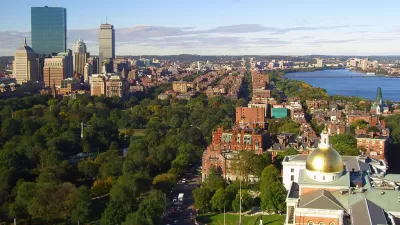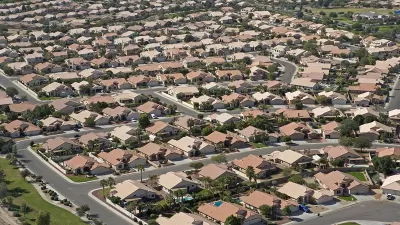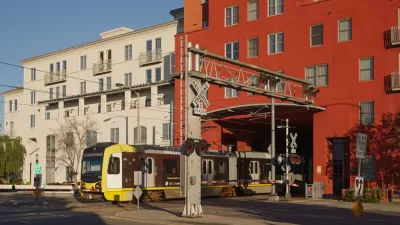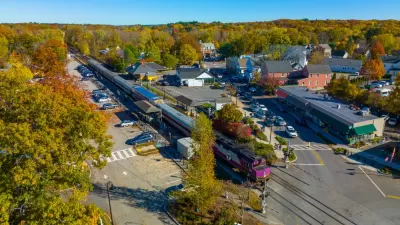A Massachusetts law aimed at reducing the state's housing shortage mandates zoning for multi-family housing in most eastern Massachusetts jurisdictions.

A Massachusetts state bill designed to boost housing production and increase density near transit will limit access to state grants for municipalities that don't comply with upzoning regulations, reports Henry Grabar.
The law mandates that communities zone for "as-of-right" multi-family apartment construction in formerly single-family neighborhoods in order to alleviate the state's housing shortage. As Grabar notes, "The mandate applies to places served by or adjacent to stations of the Massachusetts Bay Transportation Authority, the state agency that operates the buses and trains that fan out of Boston," with the biggest burden placed on "bedroom suburbs" that, despite having excellent transit, continue to limit housing production with exclusionary zoning that keeps housing costs high and supply low.
The new regulations require designated communities to zone or rezone at least one district to 15 homes per acre, compared to the current average of 6.2 homes per acre. Grabar points out that "That corresponds to a relatively dense but recognizably suburban fabric, such as town houses or duplexes around shared yards."
While state leaders hope a blanket policy will eliminate lengthy local hearing processes and reduce development costs, there are concerns about ways that resistant communities could circumvent or ignore the new law by adjusting zoning maps or imposing unreasonable restrictions.
FULL STORY: Can You Force the Suburbs to Build Apartments? Massachusetts Is Trying.

Maui's Vacation Rental Debate Turns Ugly
Verbal attacks, misinformation campaigns and fistfights plague a high-stakes debate to convert thousands of vacation rentals into long-term housing.

Planetizen Federal Action Tracker
A weekly monitor of how Trump’s orders and actions are impacting planners and planning in America.

San Francisco Suspends Traffic Calming Amidst Record Deaths
Citing “a challenging fiscal landscape,” the city will cease the program on the heels of 42 traffic deaths, including 24 pedestrians.

Defunct Pittsburgh Power Plant to Become Residential Tower
A decommissioned steam heat plant will be redeveloped into almost 100 affordable housing units.

Trump Prompts Restructuring of Transportation Research Board in “Unprecedented Overreach”
The TRB has eliminated more than half of its committees including those focused on climate, equity, and cities.

Amtrak Rolls Out New Orleans to Alabama “Mardi Gras” Train
The new service will operate morning and evening departures between Mobile and New Orleans.
Urban Design for Planners 1: Software Tools
This six-course series explores essential urban design concepts using open source software and equips planners with the tools they need to participate fully in the urban design process.
Planning for Universal Design
Learn the tools for implementing Universal Design in planning regulations.
Heyer Gruel & Associates PA
JM Goldson LLC
Custer County Colorado
City of Camden Redevelopment Agency
City of Astoria
Transportation Research & Education Center (TREC) at Portland State University
Jefferson Parish Government
Camden Redevelopment Agency
City of Claremont





























